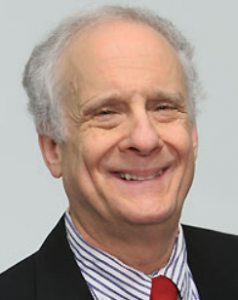
A change in leadership at the U.S. Environmental Protection Agency’s Great Lakes office in Chicago won’t change the agency’s direction.
That was affirmed last week by EPA Administrator Andrew Wheeler in a letter to EPA staff obtained by Great Lakes Now. Wheeler’s letter announced that Kurt Thiede will replace Cathy Stepp as EPA Region 5 administrator.
Region 5 includes Minnesota, Wisconsin, Illinois, Indiana, Michigan and Ohio.
As chief of staff, Thiede “prioritized engagement of the regulated community, with a specific emphasis on establishing open lines of communication with the region’s agriculture stakeholders,” Wheeler wrote.

Kurt Thiede, Photo by U.S. Environmental Protection Agency
Thiede also worked to improve relations between EPA and the state agencies that interface with EPA, according to Wheeler.
Stepp led Region 5 from December 2017. She resigned to focus on professional opportunities in Missouri.
Thiede joined EPA’s Region 5 in 2018 after a stint as a deputy director in the Wisconsin Department of Natural Resources under Stepp.
“I look forward to helping to continue to advance this administration’s priorities of protecting public health and the environment, while promoting a strong and vibrant economy,” Thiede said, continuing the Trump administration theme of putting the economy on equal footing with environmental protection.
Asked by Great Lakes Now to list her accomplishments at EPA, Stepp too talked about working with business interests.
Stepp wrote in a lengthy email that she “called upon the regional staff to enhance communication with our industry partners – particularly in the agricultural and manufacturing sectors – to provide consistency and, ultimately, to increase compliance.”
On the Great Lakes, Stepp said her office focused on “creativity and innovative approaches” to deal with problems.
”This resulted in funding important projects faster and accelerating the pace of cleanups,” she wrote.
She did not provide examples.
Trump’s “red-hot economy”
Praise for Thiede’s appointment came from around the Great Lakes region.
“I am confident Kurt (Thiede) will work on common-sense solutions pertaining to climate that build upon President Trump’s red-hot economy,” Indiana Sen. Mike Braun, who co-founded the Senate Climate Caucus, said in a statement from the EPA.
Working on climate change has not been a priority for the Trump administration, and President Donald Trump pulled the U.S. out of the Paris Climate Agreement in June 2017.
In Ohio, where the EPA is in a legal fight with environmental groups over setting pollution limits from agricultural runoff that greatly contributes to Lake Erie’s algal blooms, Ohio EPA Director Laurie Stevenson praised both Stepp and Thiede.
“Ohio EPA deeply appreciates its strong relationship with Region 5, and we have enjoyed working closely with Administrator Cathy Stepp,” Stevenson said in a statement.
On Thiede’s appointment, Stevenson said “we are confident that Kurt will provide strong leadership within Region 5 and will work collaboratively with us to resolve issues that are important to Ohio.”
Ohio recently launched Gov. Mike DeWine’s billion-dollar plan to address agricultural runoff, which continues to rely on voluntary measures by farmers.
DeWine told Great Lakes Now at a 2019 conference of Great Lakes governors that Ohio was not ready to call for regulation of farmers. Lake Erie algal blooms have persisted annually since 2011.
Empowered staff or stymied employees?
On her accomplishments, Stepp told Great Lakes Now that she “empowered EPA staff to make changes to day-to-day operations if there was room to improve.”
“I am proud to report that they did just that,” she continued. “The folks working in the region are dedicated public servants, eager to do their jobs and do them well.”
But EPA Region 5’s union employees don’t see it that way.

Nicole Cantello, President, American Federation of Government Employees, Photo courtesy of Nicole Cantello
“We wish we could say we’re sorry to see Regional Administrator Stepp go — but the fact is, she was a happy foot soldier in the Trump administration’s all-out assault on the EPA,” said Nicole Cantello, president of the American Federation of Government Employees Local 704.
The Trump administration has “waged war on the thousands of scientists, attorneys and engineers who fight every day to protect human health and our environment,” Cantello said.
Cantello expressed hope that Thiede would “view the work of EPA employees as crucial and not something to be stymied.”
Chicago environmental executive Howard Learner said Stepp’s appointment to lead Region 5 in 2017 was “a step backwards” from the Obama EPA where the Great Lakes were a priority.
The Wisconsin DNR under Stepp was partial to industry and “clean air and water suffered in Wisconsin,” said Learner, who is executive director of the Environmental Law and Policy Center, a regional advocacy organization.
On Thiede’s role, Learner said the EPA’s priority is to work for clean air and water, and allow people to live in communities without toxic threats.
“That is the statutory priority of the EPA, not prioritizing engagement of the regulatory community” as Administrator Wheeler noted in his appointment announcement, Learner said.
ELPC is the lead plaintiff in a federal lawsuit against the EPA over Lake Erie and has filed suit against steel producer ArcelorMittal for discharges to Lake Michigan that the organization said were in violation of the Clean Water Act.
EPA has not taken action against ArcelorMittal for the violations, according to ELPC.
The long view
From Wisconsin, veteran political commentator James Rowen observed Stepp and Thiede going back to 2011 when they were running the DNR under former Gov. Scott Walker.
The budget and staff were cut, wetlands were deregulated and surface water contamination went unaddressed, according to Rowen, who said that’s why they were brought into Trump’s EPA at Region 5.

James Rowen, political writer, courtesy of jsonline.com
“I see no reason to believe Thiede will emerge as an authentic and influential pro-conservation presence managing the very important U.S. EPA office which oversees Great Lakes watersheds, the region’s agricultural resources and economically-crucial recreational waters,” Rowen said.
Rowen writes The Political Environment blog and is a critic of former Gov. Walker and President Trump.
With the 2020 presidential election looming, the economy in the Great Lakes region may be critical in three states that went for Trump in 2016 – Ohio, Michigan and Wisconsin.
That hasn’t been lost on Michigan Gov. Gretchen Whitmer, who said last June that the Great Lakes region has 25 percent of the Electoral College votes.
“We have an opportunity to drive a Great Lakes agenda and get presidential candidates, no matter which party, to subscribe to our agenda,” Whitmer said.
Featured Image: Regions of the United States EPA, Image courtesy of Ninjatacoshell via wikimedia cc 3.0
2 Comments
-
Thanks for posting this info.
-
Thanks for posting this. Warren Michigan has green goo and other issues right now




